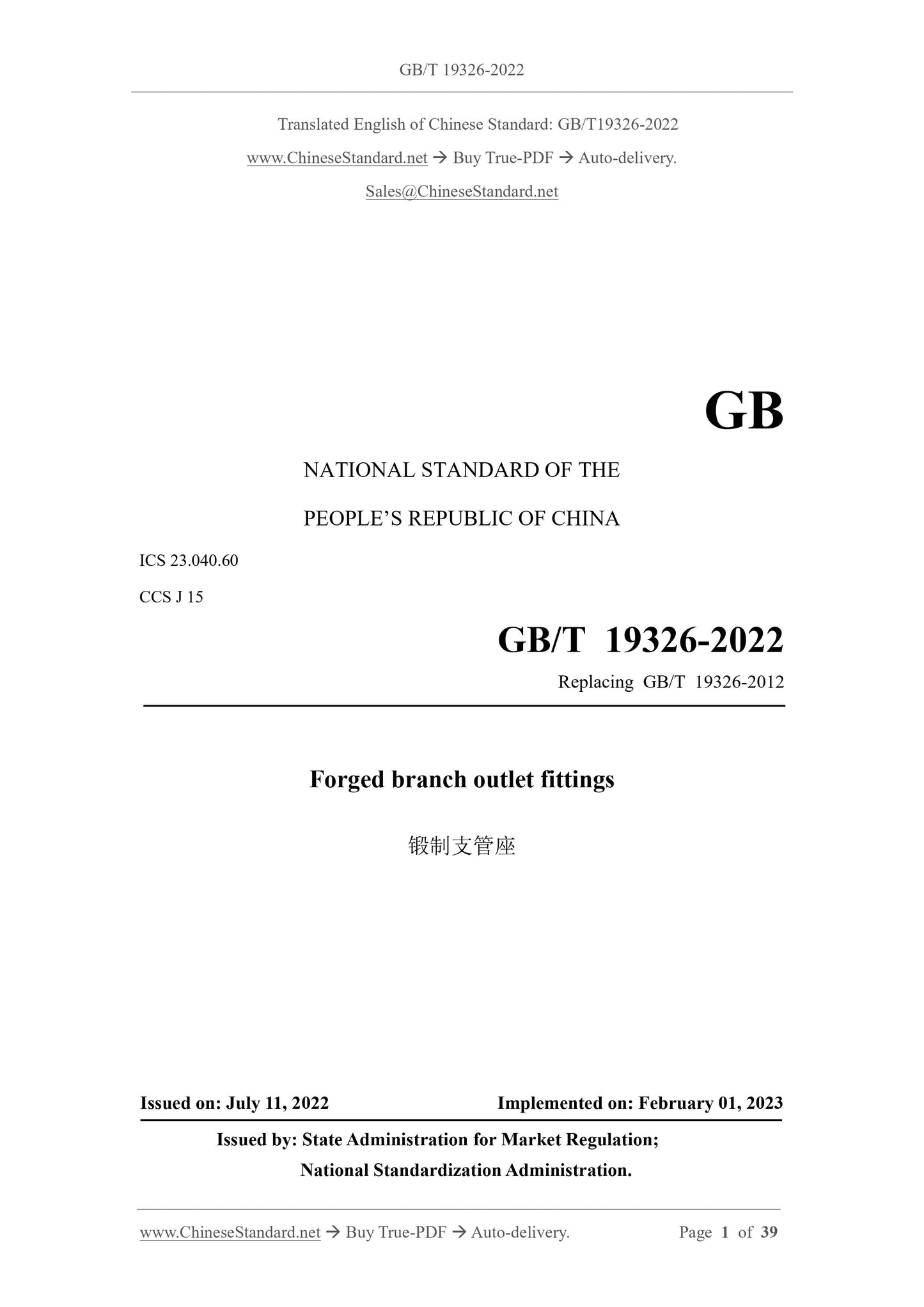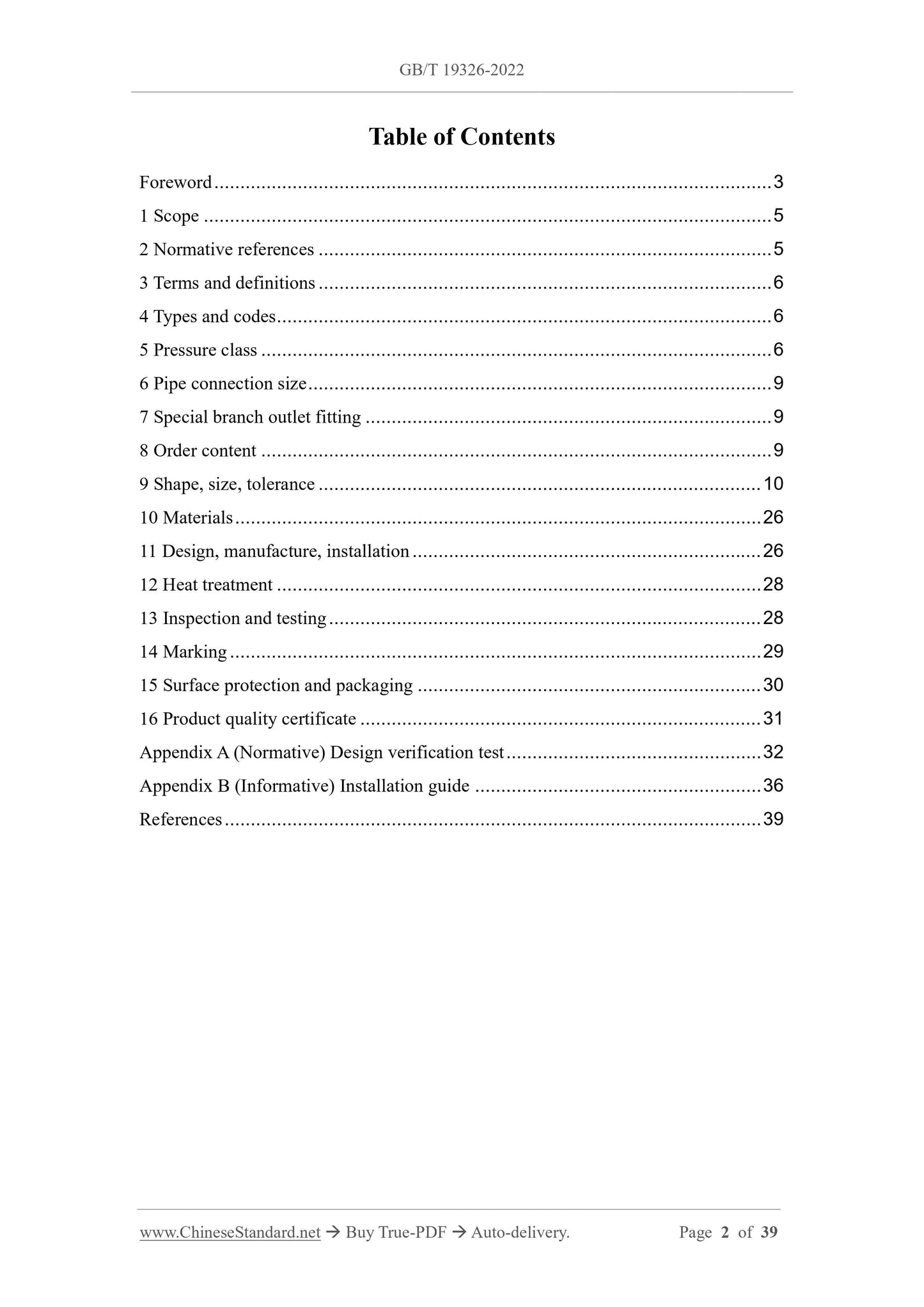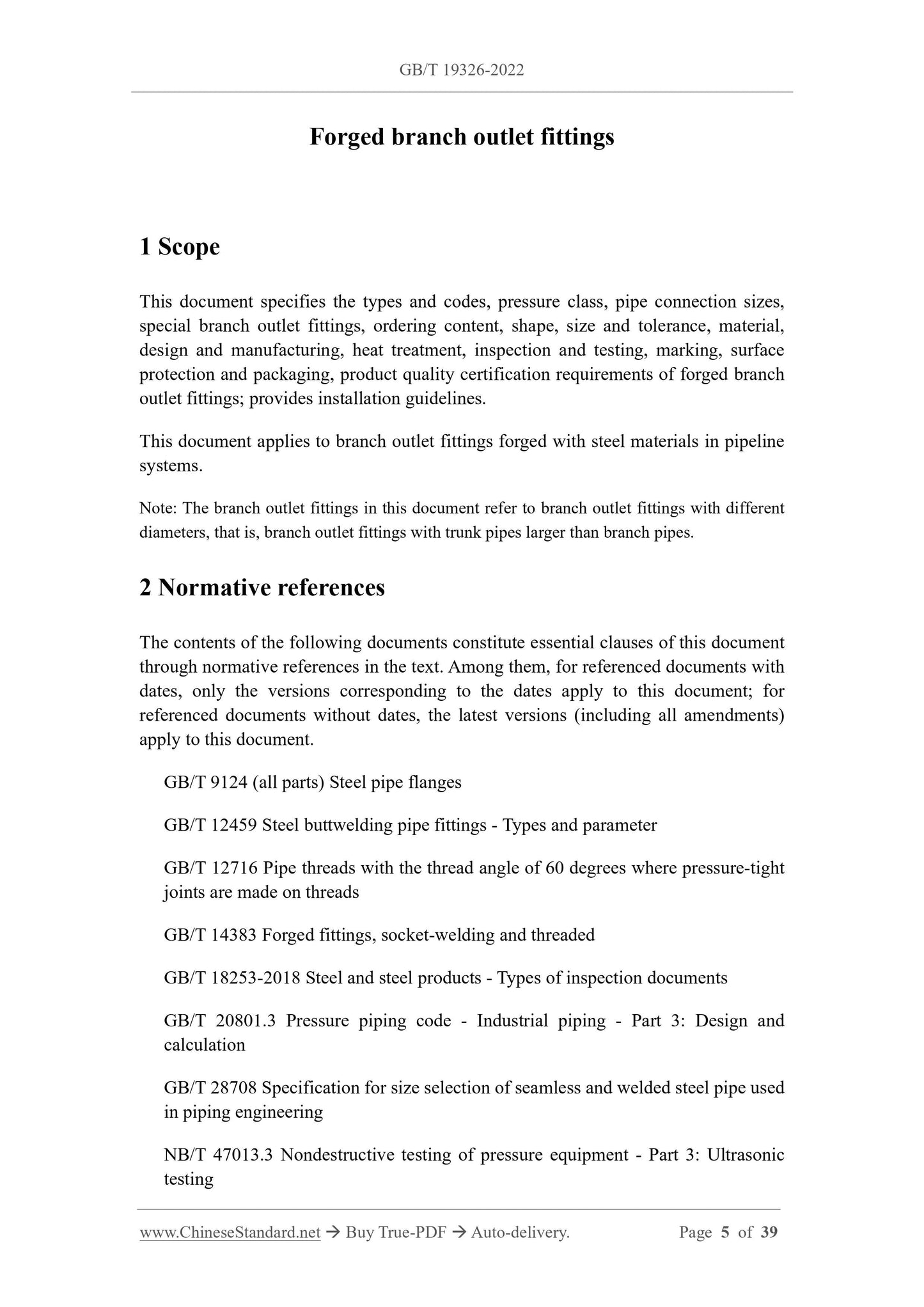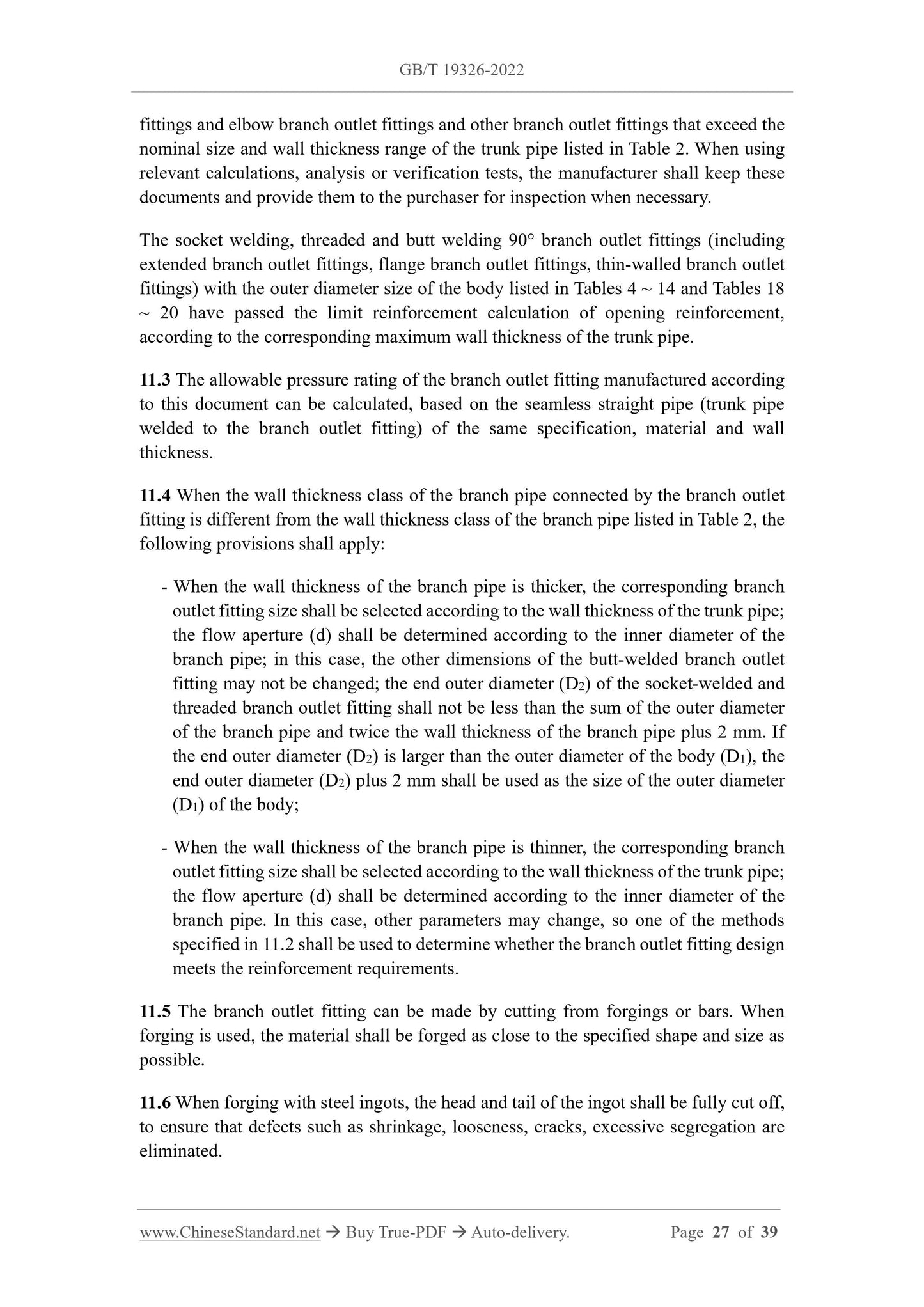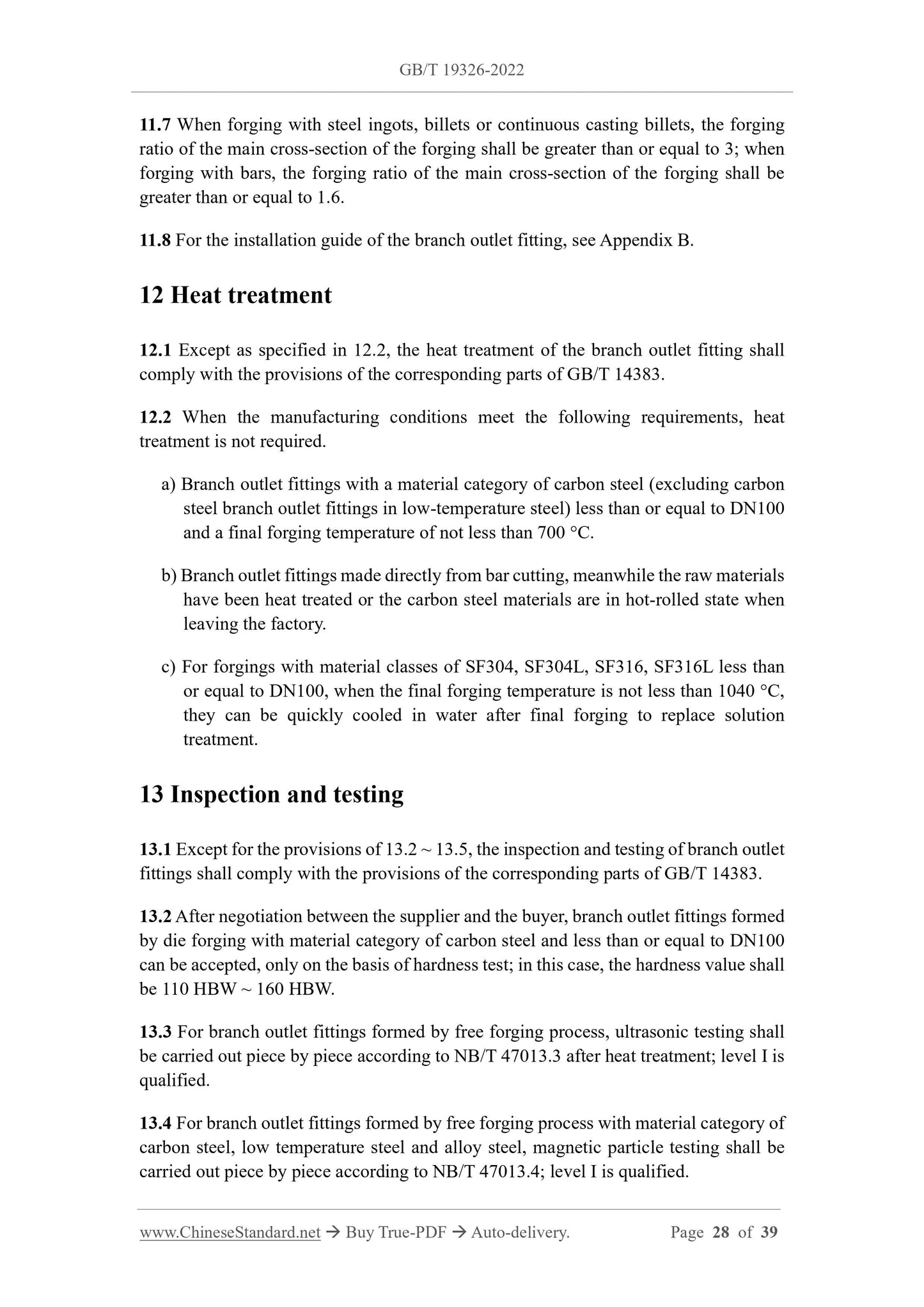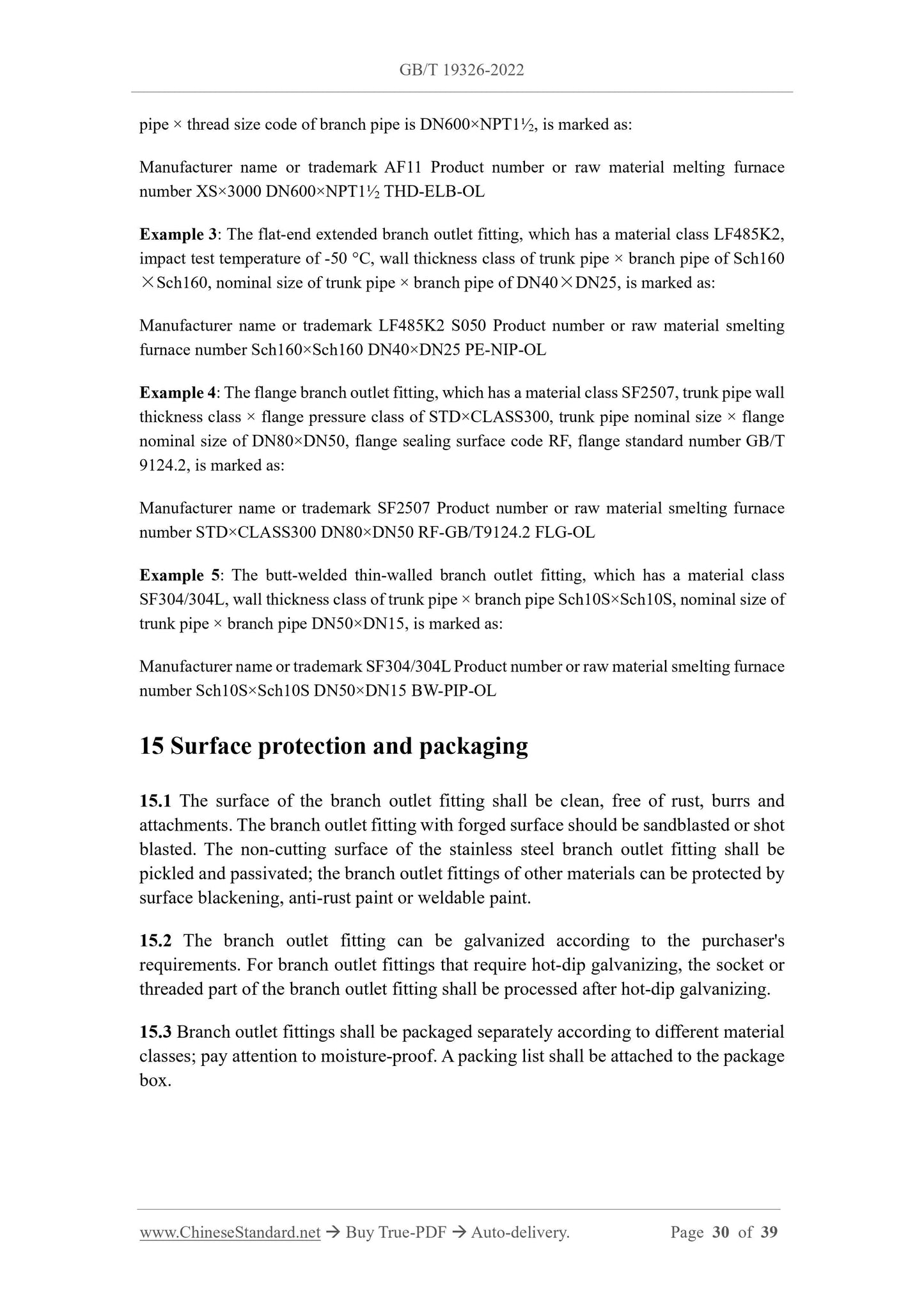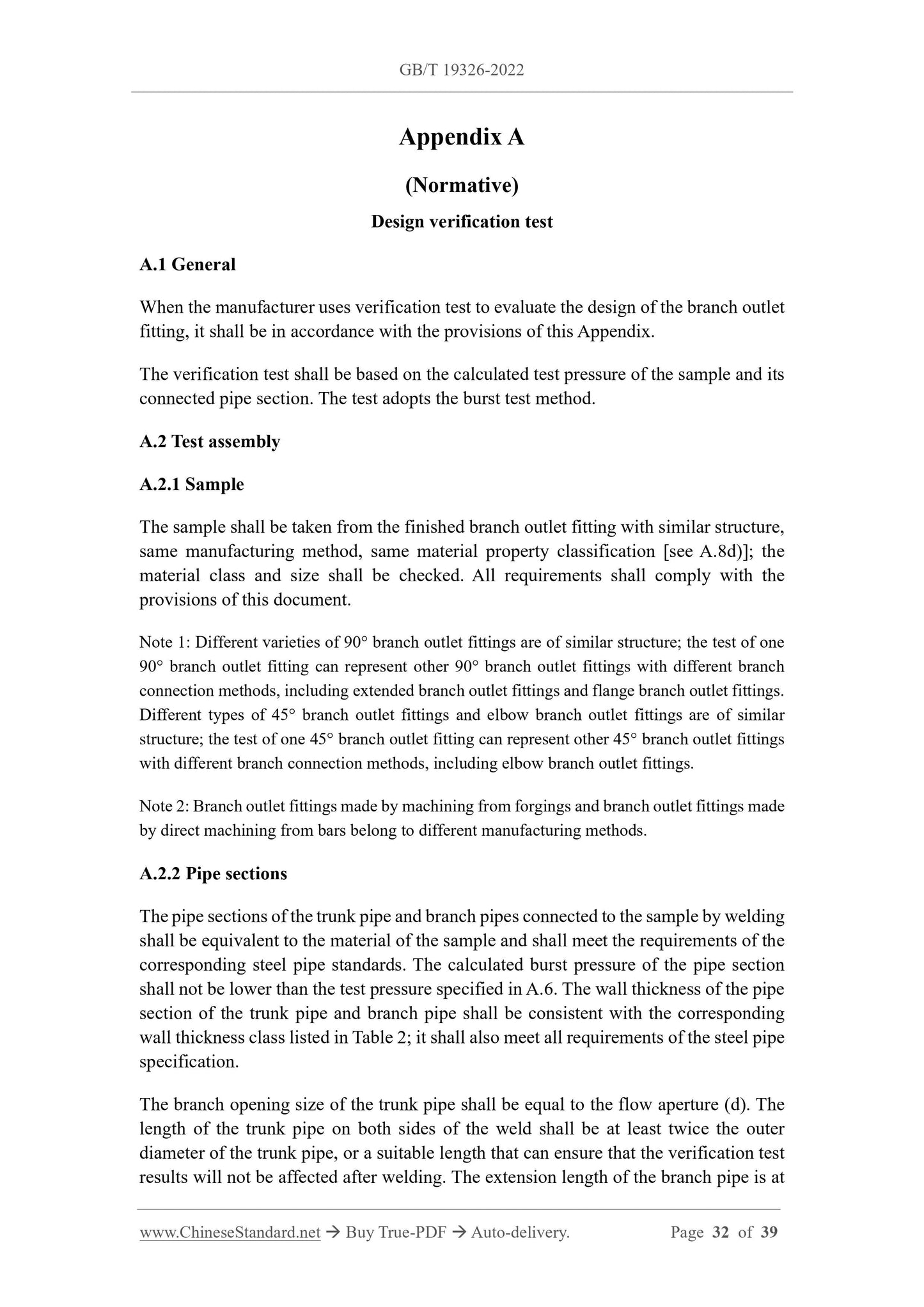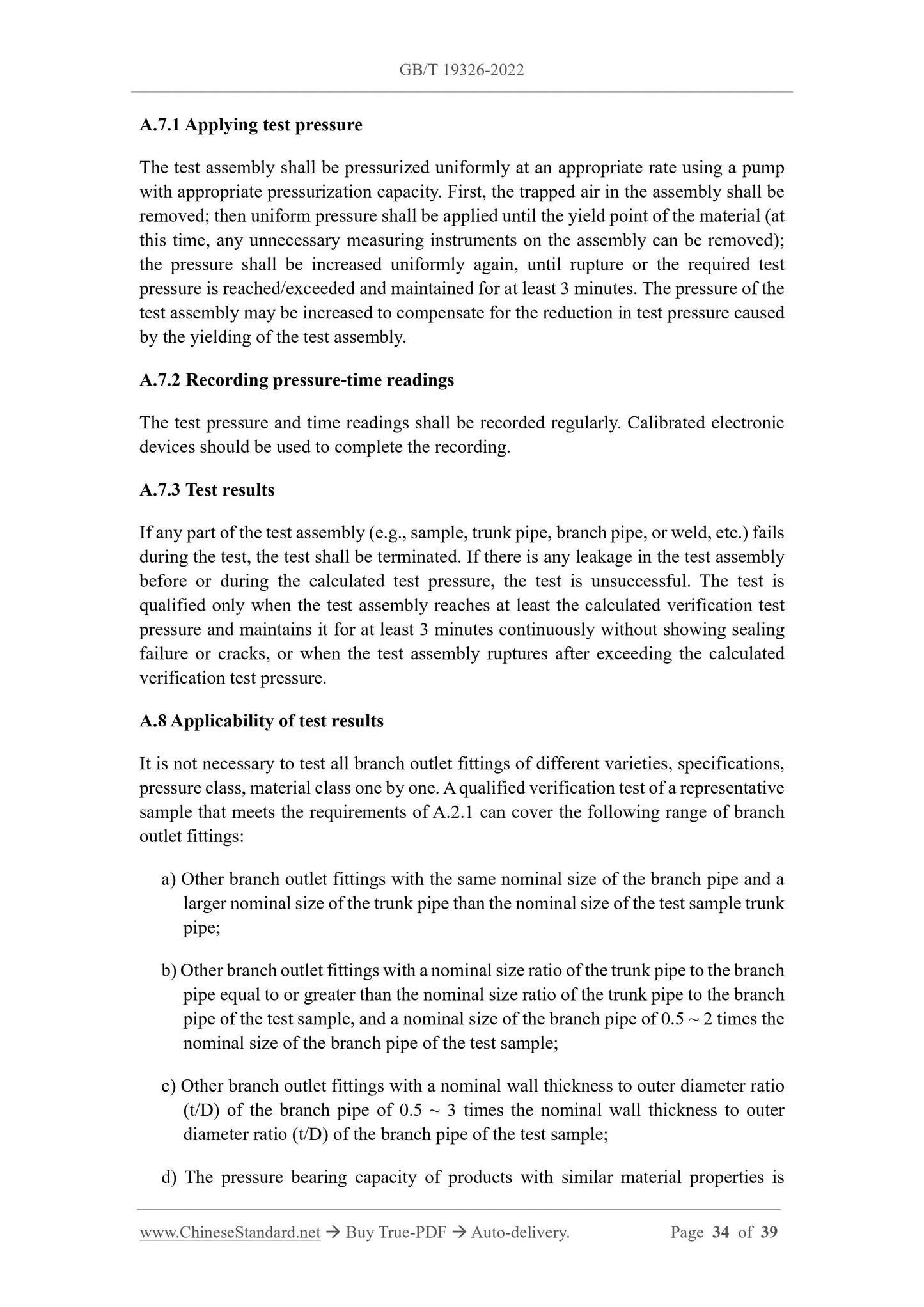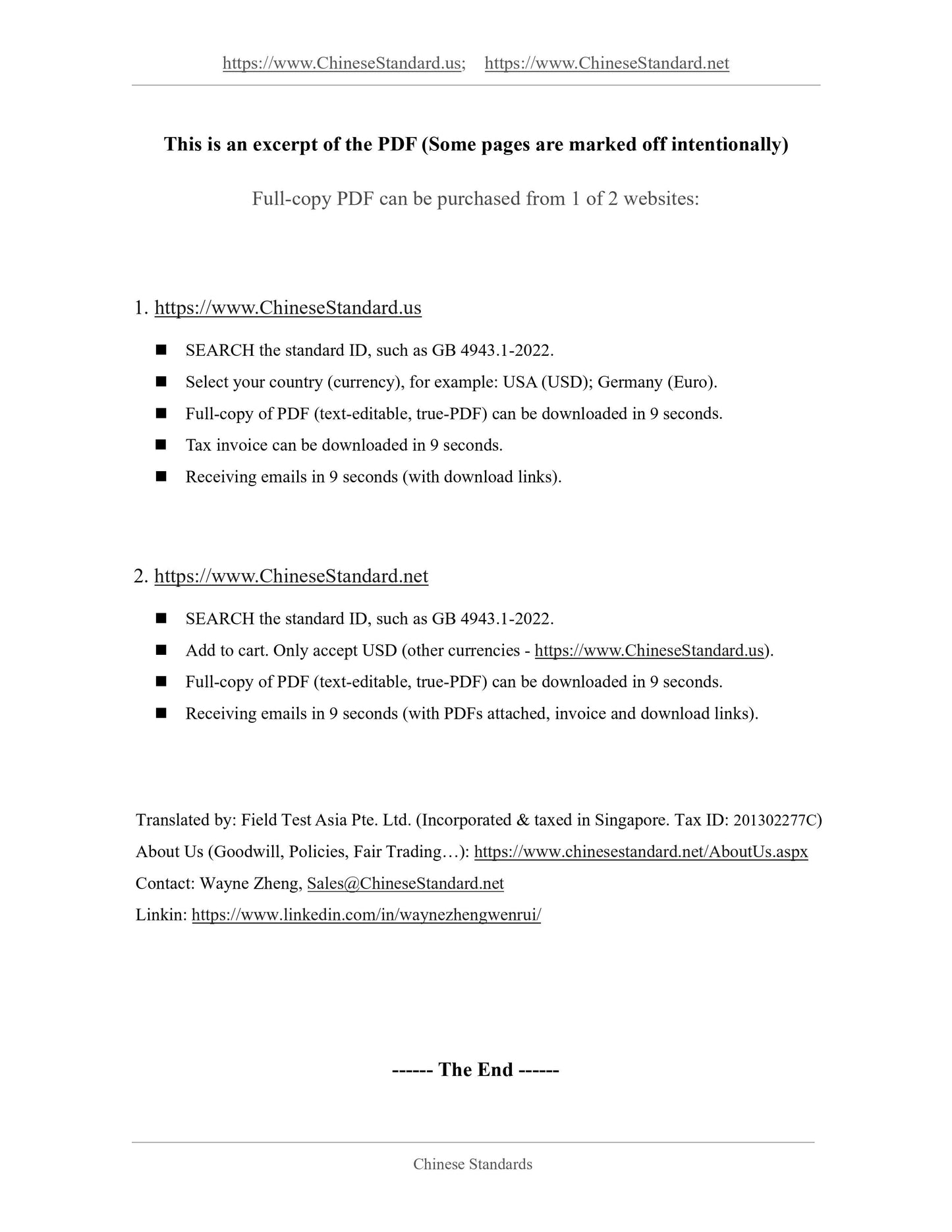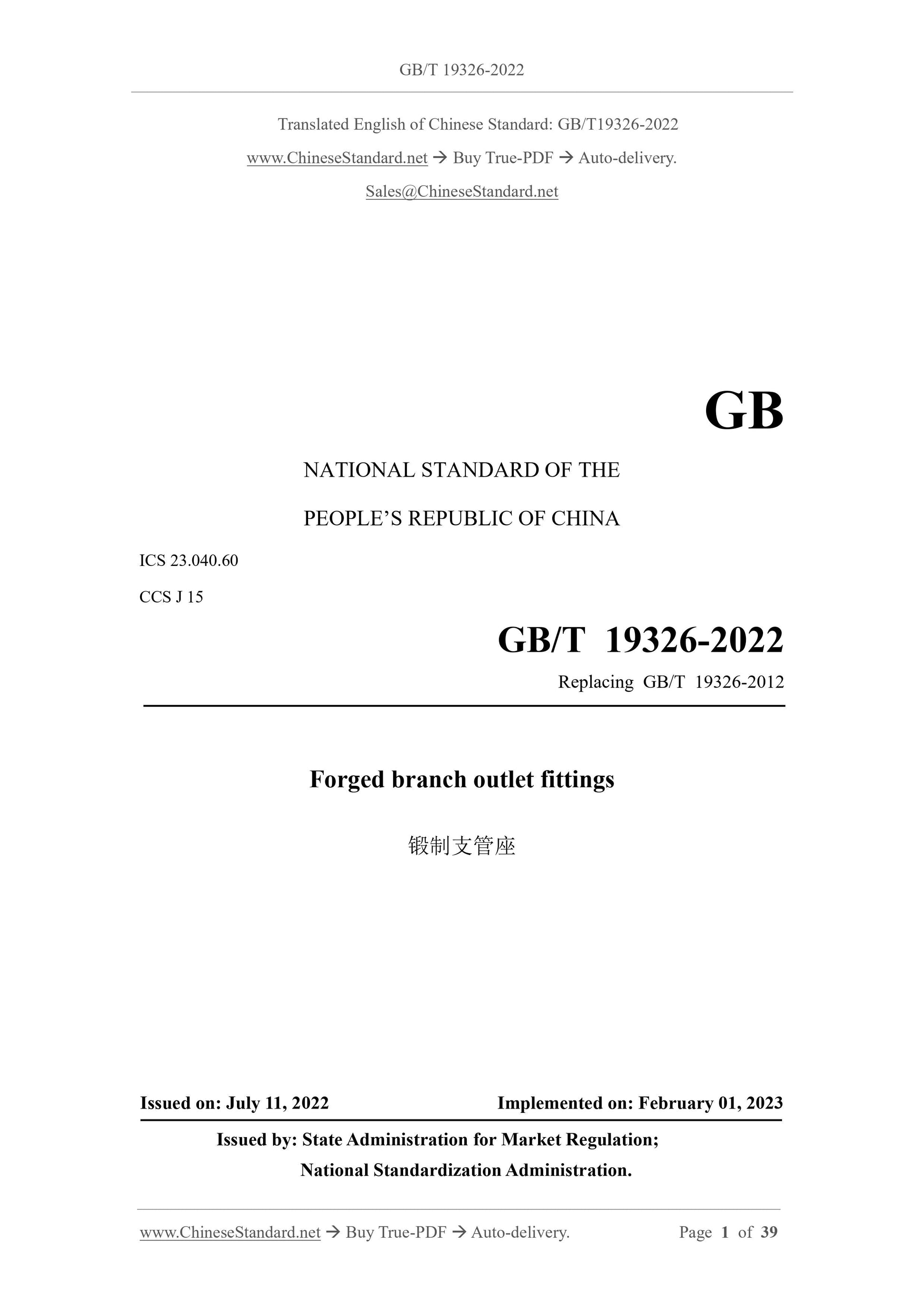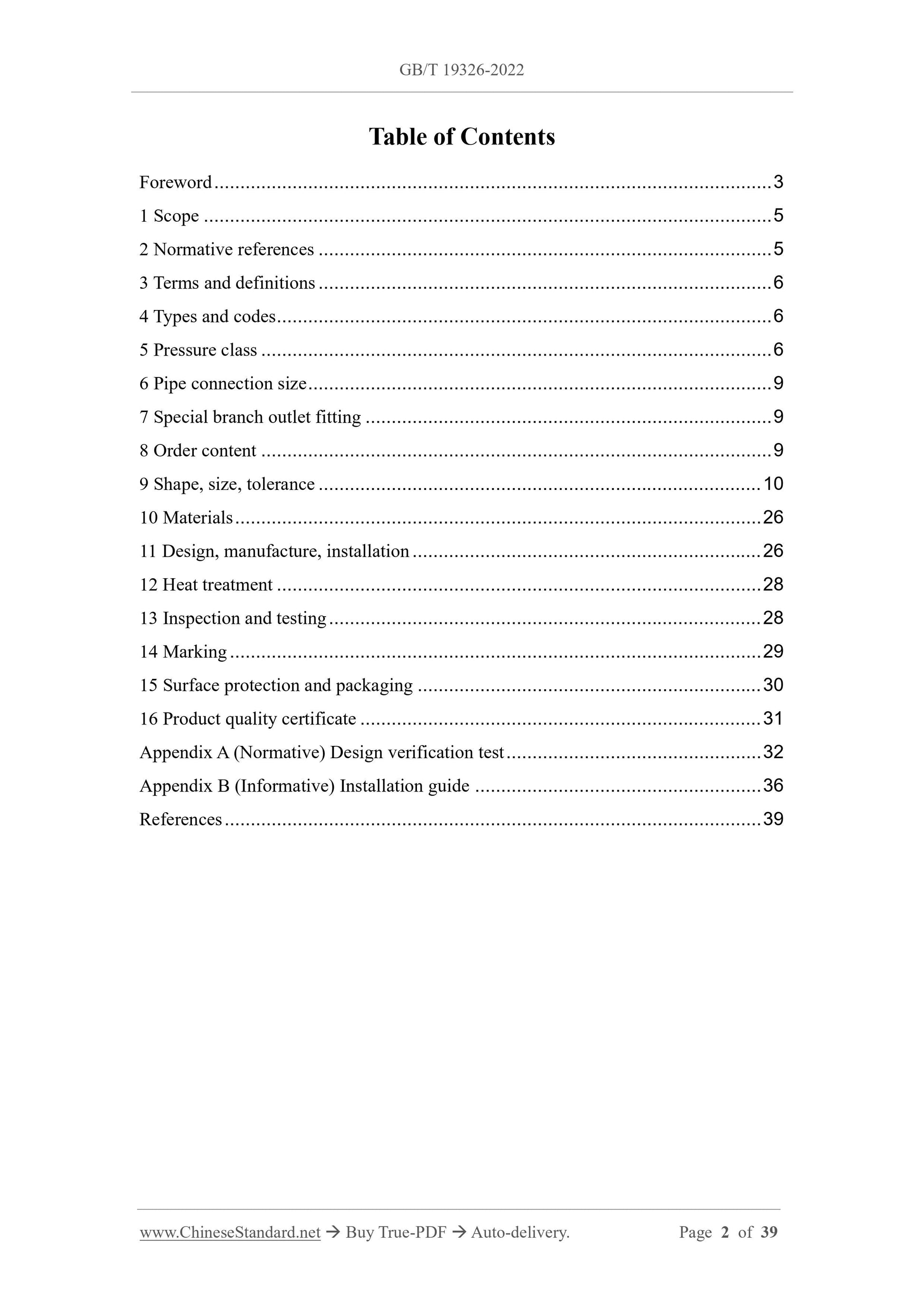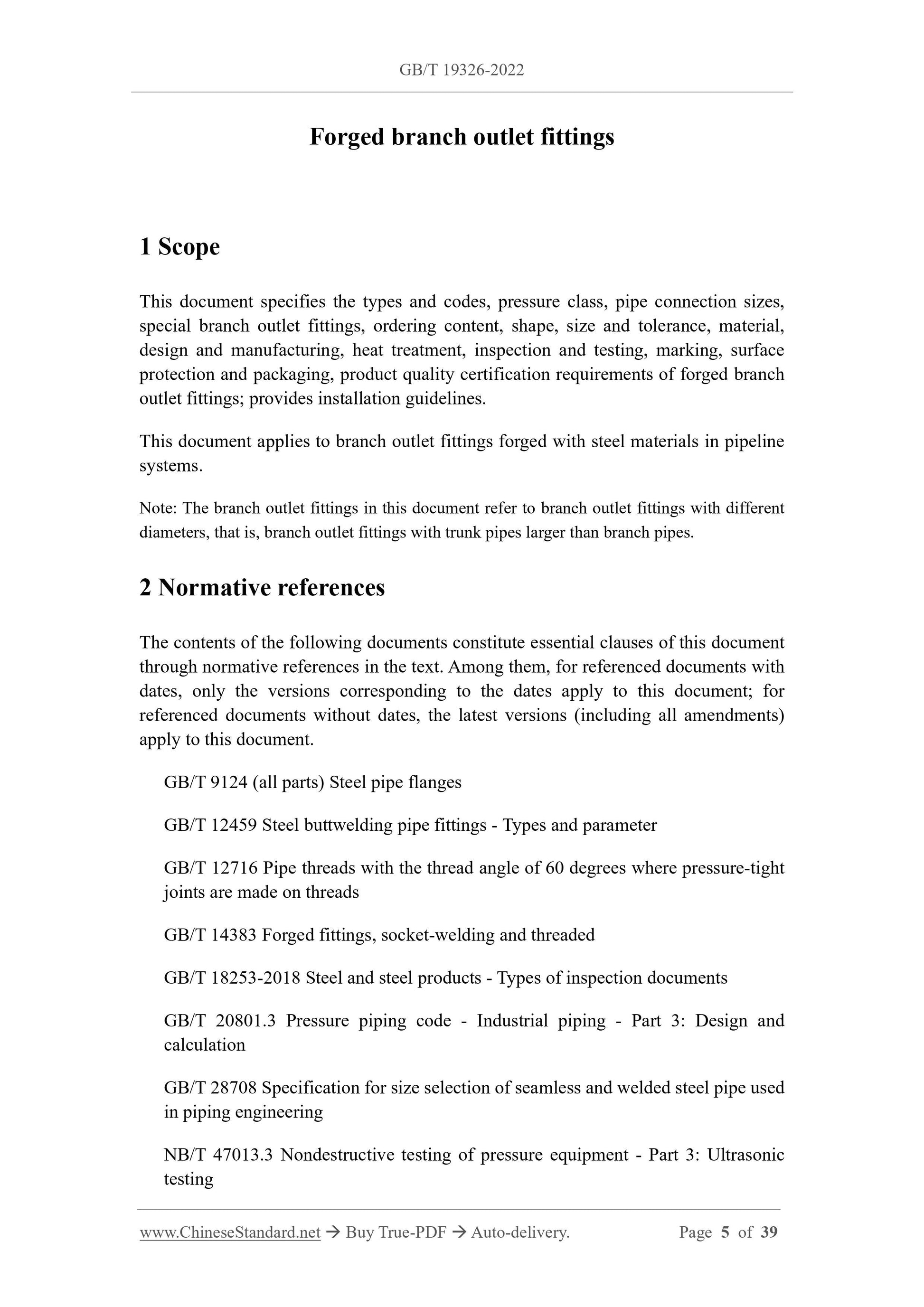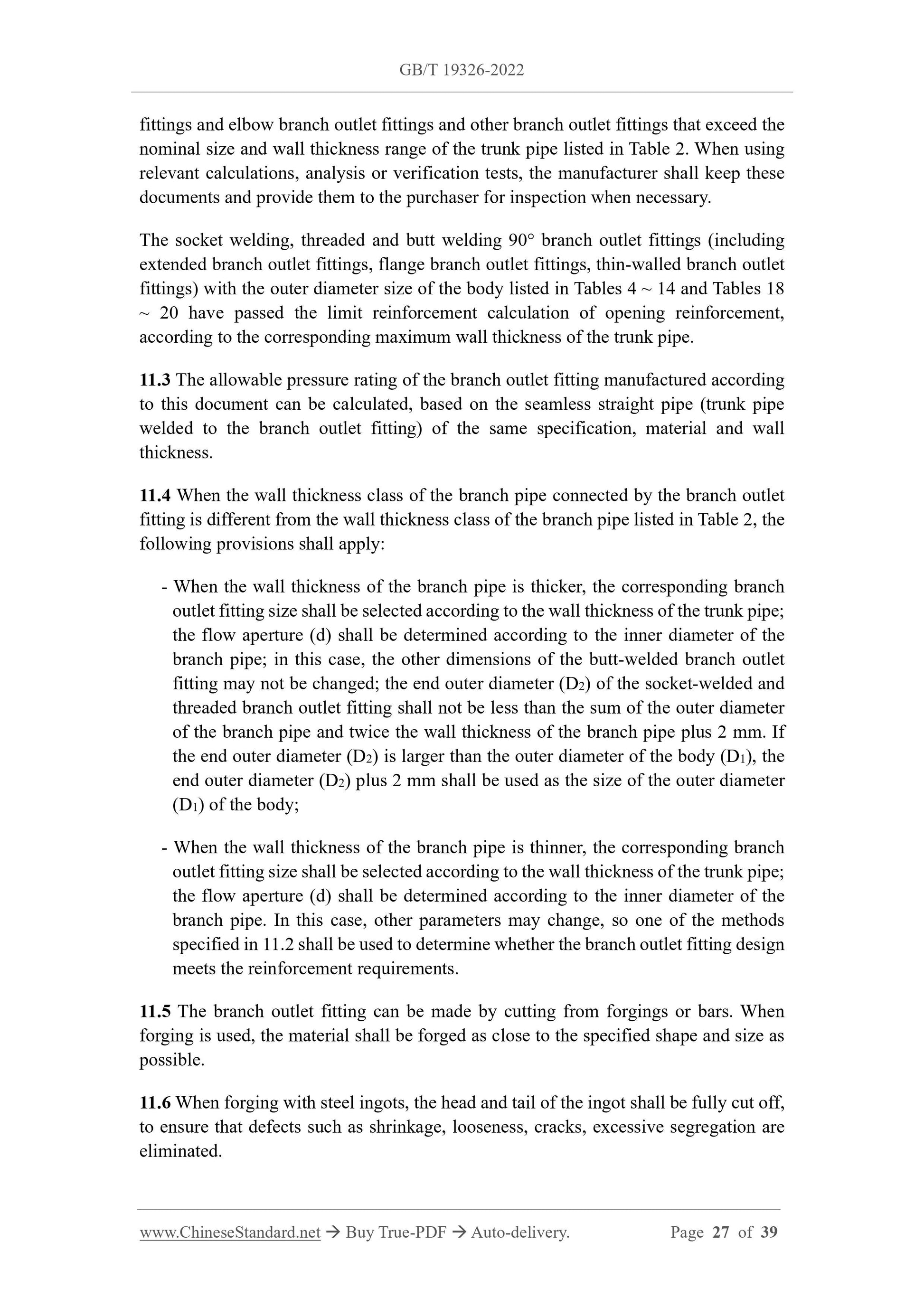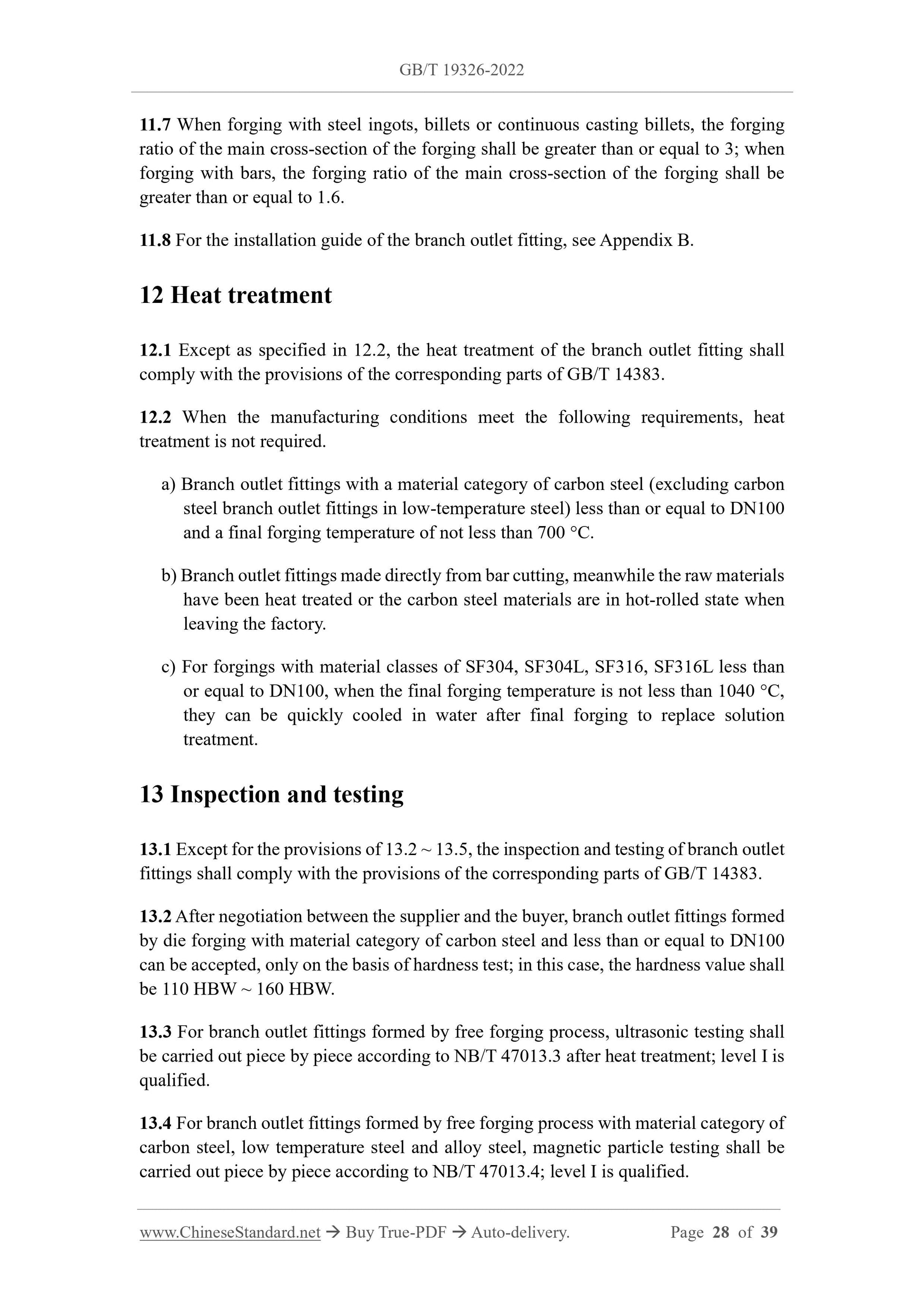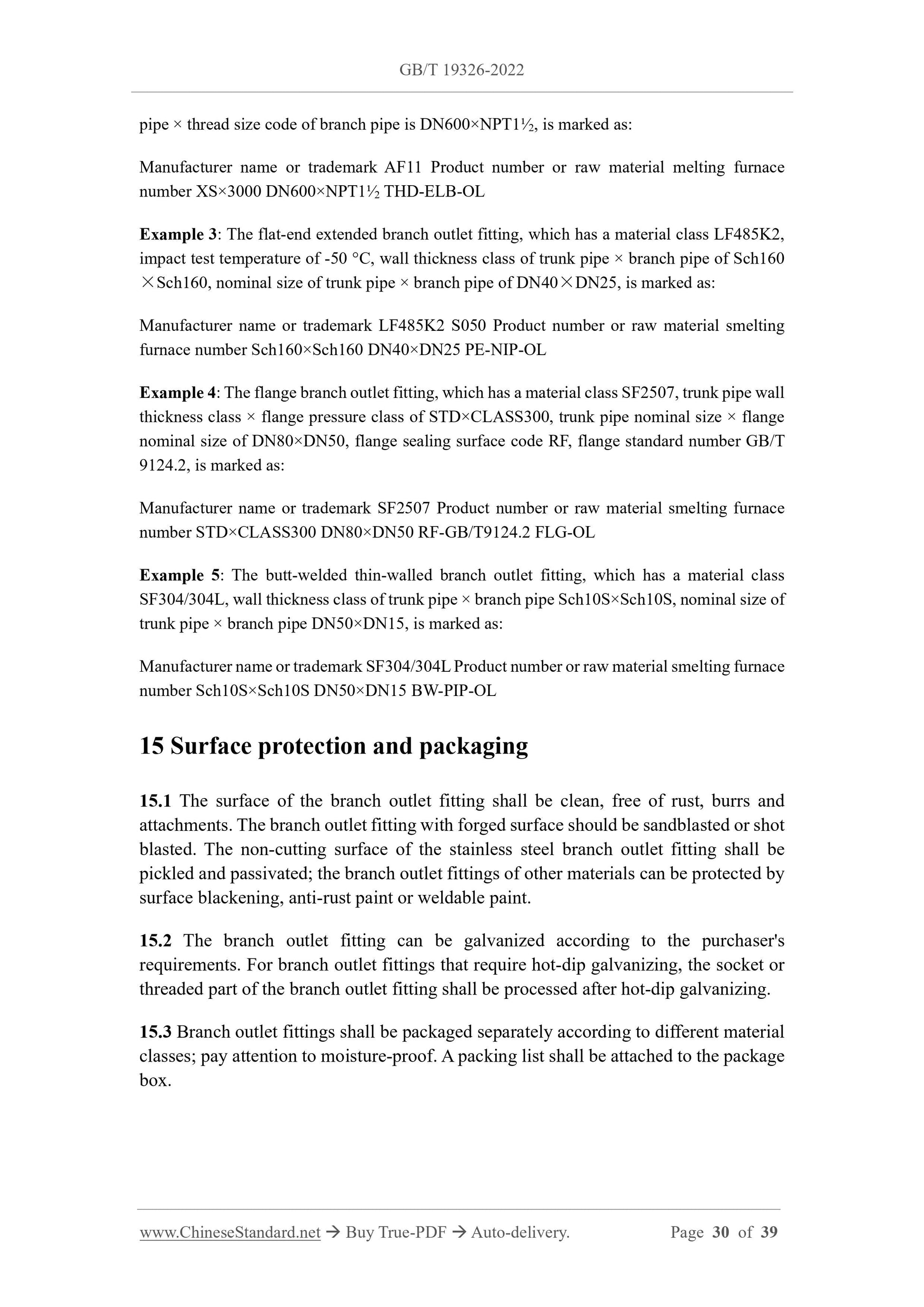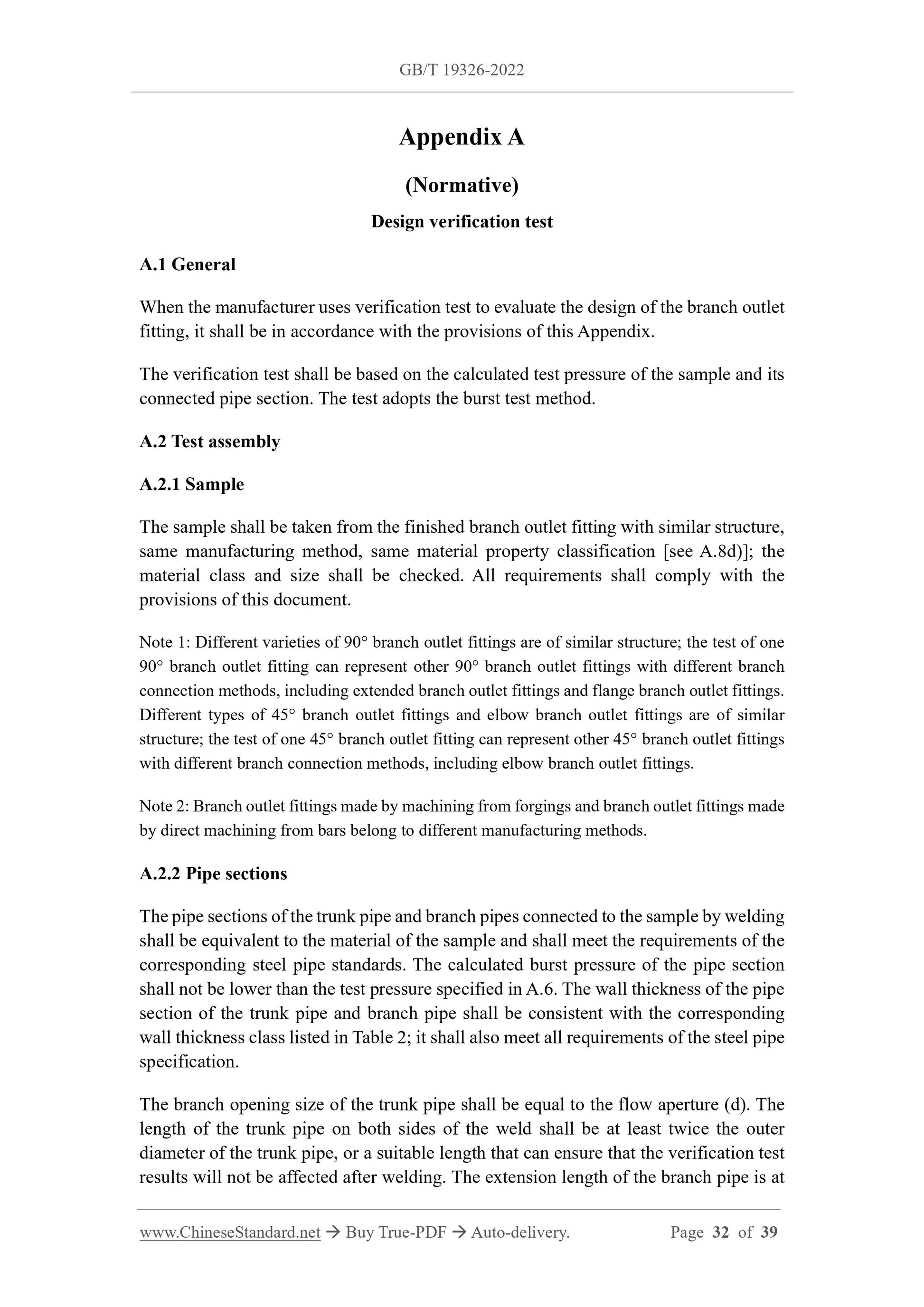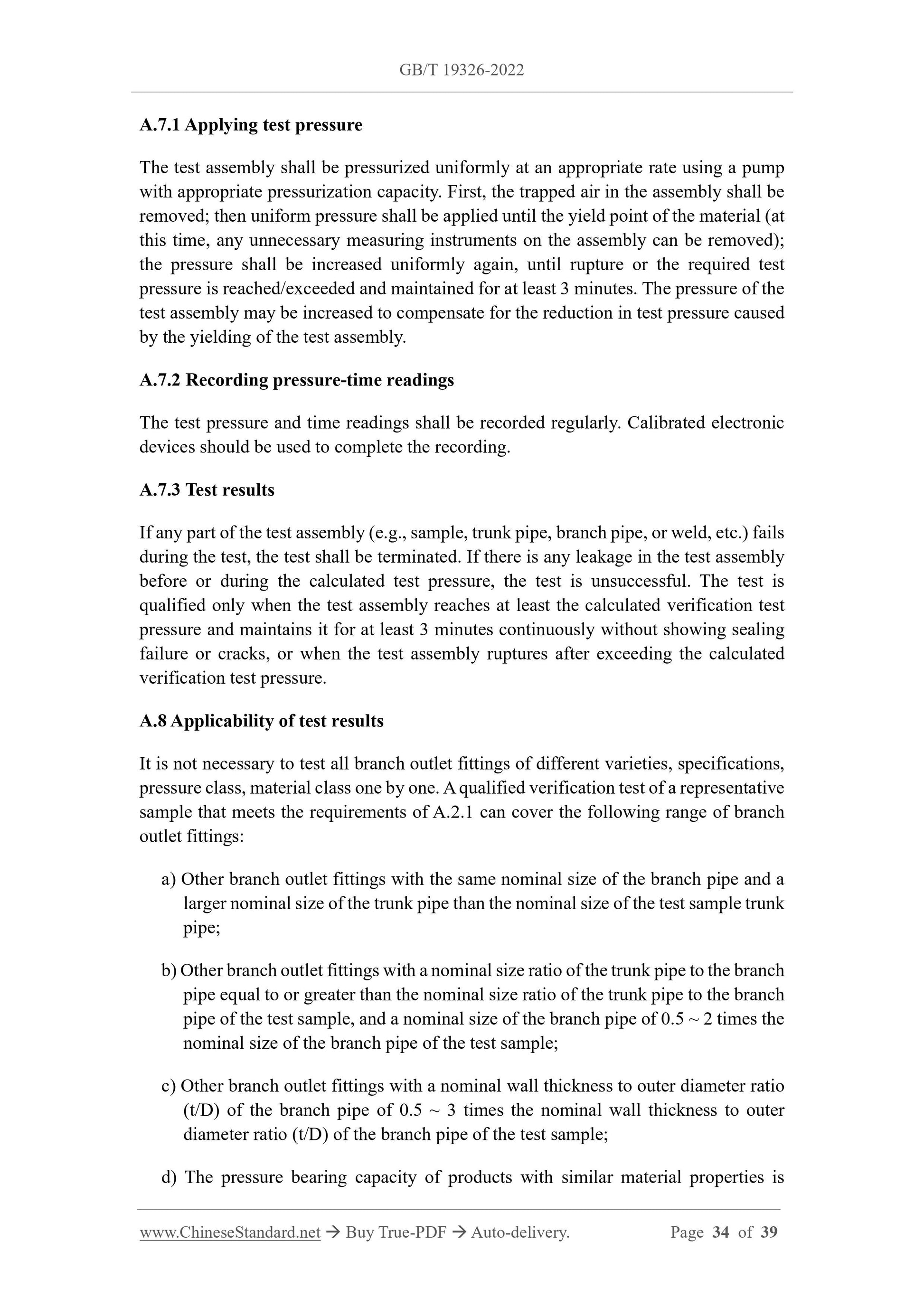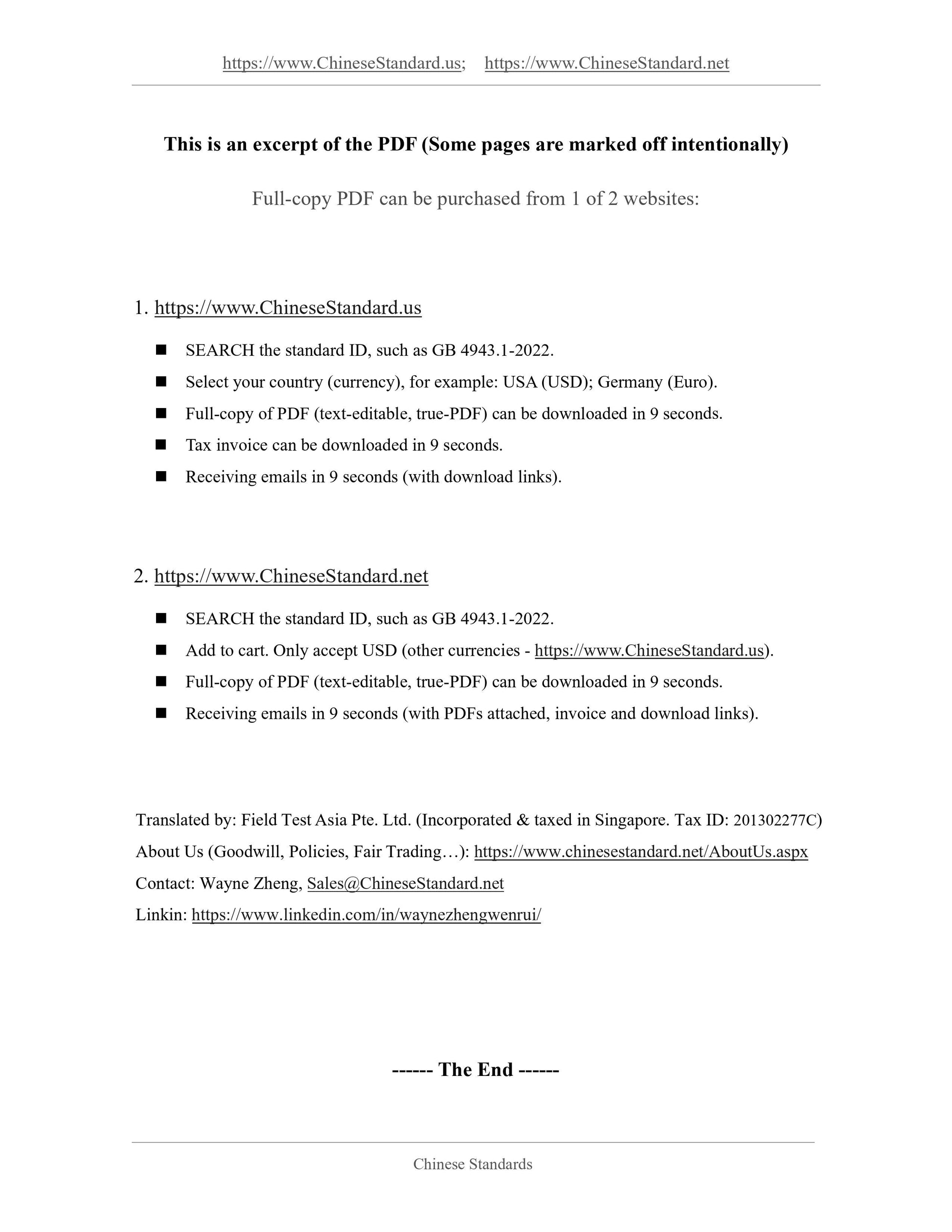1
/
of
9
www.ChineseStandard.us -- Field Test Asia Pte. Ltd.
GB/T 19326-2022 English PDF (GB/T19326-2022)
GB/T 19326-2022 English PDF (GB/T19326-2022)
Regular price
$455.00
Regular price
Sale price
$455.00
Unit price
/
per
Shipping calculated at checkout.
Couldn't load pickup availability
GB/T 19326-2022: Forged branch outlet fittings
Delivery: 9 seconds. Download (and Email) true-PDF + Invoice.Get Quotation: Click GB/T 19326-2022 (Self-service in 1-minute)
Newer / historical versions: GB/T 19326-2022
Preview True-PDF
Scope
This document specifies the types and codes, pressure class, pipe connection sizes,special branch outlet fittings, ordering content, shape, size and tolerance, material,
design and manufacturing, heat treatment, inspection and testing, marking, surface
protection and packaging, product quality certification requirements of forged branch
outlet fittings; provides installation guidelines.
This document applies to branch outlet fittings forged with steel materials in pipeline
systems.
Note: The branch outlet fittings in this document refer to branch outlet fittings with different
diameters, that is, branch outlet fittings with trunk pipes larger than branch pipes.
Basic Data
| Standard ID | GB/T 19326-2022 (GB/T19326-2022) |
| Description (Translated English) | Forged branch outlet fittings |
| Sector / Industry | National Standard (Recommended) |
| Classification of Chinese Standard | J15 |
| Word Count Estimation | 31,370 |
| Issuing agency(ies) | State Administration for Market Regulation, China National Standardization Administration |
Share
